Finding care for an arrhythmia starts with knowing which type you have.
Heart arrhythmias are problems with your heart’s electrical signals. These conditions cause abnormal heart rates or rhythms in which your heart beats too quickly (tachycardia), too slowly (bradycardia) or in an irregular pattern. If you have a heart arrhythmia, you may feel like your heart is racing, pounding, fluttering or “skipping a beat.”
The heart muscle has two upper chambers called atria and two lower chambers called ventricles. All four chambers play a vital role in efficiently pumping blood through the heart and lungs and back into the body. Typically, your heart sends electrical signals that tell each chamber to pump in a predictable, coordinated manner. Heart arrhythmias interfere with the usual rate or rhythm.
Some heart arrhythmias are harmless, while others cause more serious issues. If you’ve recently been diagnosed with an arrhythmia, understanding the type you have will help you better understand your treatment options.
Types of arrhythmia
Tachycardia (fast heartbeat)
- Atrial fibrillation (AFib): Abnormal electrical signals cause the atria to beat too quickly and in a different rhythm than the ventricles. This is the most common type of arrhythmia.
- Atrial flutter: Your atria beat too quickly, but unlike AFib, they beat in a more regular rhythm with the ventricles.
- Long QT syndrome: Electrical signals in the heart are disrupted, causing signals to take too long to pass from one ventricle to the other. This leads to fast, uncontrolled heartbeats.
- Multifocal atrial tachycardia: This is a fast heart rate that happens when too many electrical signals travel from the atria to the ventricles.
- Supraventricular tachycardia (SVT): SVTs are a collection of arrhythmias caused by irregular electrical activity in the atria, leading to sudden rises in heart rate.
- Ventricular tachycardia: Abnormal electrical signals in the ventricles cause a sudden, fast heart rate.
- Wolff-Parkinson-White syndrome: This congenital heart disease happens when there is an extra electrical pathway in the heart, causing episodes of fast heart rate.
Bradycardia (slow heartbeat)
- Atrioventricular (AV) heart block: An AV heart block happens when the signal from the atria is delayed or does not reach the ventricles, causing an irregular or slow heartbeat.
- Sick sinus syndrome: This type happens when the sinus node at the top of the heart, the heart’s natural pacemaker, doesn’t work as it should. The condition causes a heart rhythm that is sometimes too fast or slow.
Premature heartbeats
- Premature atrial contractions (PAC): PACs are extra heartbeats that start in the atria.
- Premature ventricular contractions (PVC): PVCs are extra heartbeats that start in the ventricles.
PACs and PCVs are common and may occur in up to 10% of your natural heartbeats daily. They usually require treatment only when other factors, such as heart disease, are present.
Arrhythmia symptoms
Symptoms of arrhythmia may include:
- An abnormally fast or slow heart rate
- Anxiety
- Chest pain or discomfort
- Difficulty exercising
- Dizziness or lightheadedness
- Extreme tiredness
- Fainting
- Shortness of breath
- Sweating
- Weakness
Arrhythmia causes
Many health conditions can cause an arrhythmia, such as:
- Congenital heart disease or heart conditions present from birth
- Congestive heart failure
- Coronary heart disease
- Diabetes
- High blood pressure
- Obstructive sleep apnea
- Postural orthostatic tachycardia syndrome, a nervous system condition
- Structural problems in the heart, often due to damage from another heart issue, such as a heart attack
- Thyroid conditions, such as Graves’ disease
- Other health concerns, such as fever, infection, a blood clot or other sources of physical or mental stress
Arrhythmia risk factors
You may be more likely to have a heart arrhythmia if you have the following risk factors:
- Anxiety or chronic stress
- Being overweight or obese
- Drinking too much caffeine
- Electrolyte imbalances that occur when you have too little or too much of certain minerals in your body
- Genetic factors
- Misusing drugs and alcohol
- Smoking
- Taking some medications and dietary supplements
- Poor sleep habits or patterns
Sometimes heart arrhythmia symptoms appear or get worse when triggered by something else, such as:
- Alcohol
- Caffeine
- Certain over-the-counter and prescription drugs
- Dehydration
- Emotional or physical stress
- Having an infection, virus or another unrelated illness
- Nicotine from smoking or vaping
- Not getting enough sleep
Diagnosing arrhythmias
Typically, the first step in diagnosing an arrhythmia is an appointment with your primary care provider (PCP). Your PCP will ask about your medical history and symptoms and perform a physical exam. They may order testing or refer you to a cardiologist if they suspect an arrhythmia.
To diagnose an arrhythmia or determine its underlying cause, one or more of these tests may be ordered:
Electrocardiogram (EKG or ECG)
This test tracks the electrical signals in the heart to monitor its health and functionality.
Blood Tests
Blood tests can detect increased or decreased levels of substances, such as potassium, electrolytes and other minerals in your body, that may cause an arrhythmia.
Monitoring Devices
Holter monitors and cardiac event recorders are examples of devices your doctor may have you wear to record your heart’s electrical activity and rhythms.
Physical tests
A doctor may perform tests that measure how the heart’s electrical functions change with different activities, for example, how well it works during exercise versus at rest (stress test) or when you change positions from laying down to standing up (tilt-table test).
Imaging and physiologic tests
Tests may include different imaging exams, such as an echocardiogram, which uses ultrasound waves to show your heart while it pumps, or electrophysiology tests, which use electrode catheters to record and map your heart’s electrical signals.
Genetic testing
Certain gene mutations or inherited genetic traits can increase your risk of developing an arrhythmia.
Arrhythmia treatment
Lifestyle changes
You can manage a heart arrhythmia with healthy lifestyle choices, such as:
- Eating a heart-healthy diet
- Limiting alcohol to one drink a day for men or two drinks per day for women
- Maintaining a healthy weight
- Managing other chronic conditions, such as diabetes and high blood pressure
- Quitting smoking and avoiding secondhand smoke
- Improving sleep quality or duration
- Avoiding stressful situations
Medication
Certain medications, including beta blockers, calcium channel blockers and blood thinners, may help you manage symptoms, prevent complications or manage the underlying cause of your arrhythmia.
Therapies
- Vagal maneuvers: Vagal maneuvers are physical actions, such as breathing exercises, that you can use to relax, slow your heart rate and lower your blood pressure.
- Cardioversion: Cardioversion is a procedure that uses low-frequency energy pulses to restore your heart rhythm.
- Ablations: Two types of ablations may be used for arrhythmia.
- A catheter ablation uses a narrow catheter to modify or remove faulty electrical pathways causing your arrhythmia.
- A cryoablation applies cold temperatures to faulty electrical pathways, and a radiofrequency ablation takes the opposite approach and applies heat to faulty electrical pathways.
The type of ablation procedure used would depend on which type of arrhythmia you have, as well as underlying health issues and other factors.
Devices
- Pacemaker: This small, implanted device sends electrical signals to the heart to create or maintain a regular rhythm.
- Implantable cardioverter defibrillator (ICD): This small device monitors the heart for abnormal heart rhythms. When an arrhythmia is detected, the ICD sends an electrical signal to correct the rhythm.
Surgery
- Maze procedure: This procedure uses various techniques to create scar tissue that blocks the faulty electrical signals causing an arrhythmia
Find a location near you
We help you get care at a location that fits your needs. We offer several locations for arrhythmia care, including specialized centers in North and Central Texas.

Baylor Scott & White Advanced Heart Failure Clinic - Longview
906 Judson Rd , Longview, TX, 75601
Baylor Scott & White Advanced Heart Failure Clinic - Tyler
1321 S Beckham Ave , Tyler, TX, 75701
Baylor Scott & White Cardiology Consultants of Texas - Greenville
4400 Interstate 30 W Ste 300, Greenville, TX, 75402- Monday: 8:30 am - 5:00 pm
- Tuesday: 8:30 am - 5:00 pm
- Wednesday: 8:30 am - 5:00 pm
- Thursday: 8:30 am - 5:00 pm
- Friday: 8:30 am - 5:00 pm

Baylor Scott & White Texas Cardiac Associates - Royse City
6257 FM 2642 Blvd Ste 100, Royse City, TX, 75189
Baylor Scott & White The Heart Hospital - McKinney
5268 W University Dr , McKinney, TX, 75071
Baylor Scott & White The Heart Group - McKinney
5236 W University Dr Ste 4450, McKinney, TX, 75071- Monday: 8:30 am - 5:00 pm
- Tuesday: 8:30 am - 5:00 pm
- Wednesday: 8:30 am - 7:00 pm
- Thursday: 8:30 am - 5:00 pm
- Friday: 8:30 am - 5:00 pm

Baylor Scott & White Legacy Heart Center - McKinney
5236 W University Dr Ste 4100, McKinney, TX, 75071- Monday: 8:00 am - 5:00 pm
- Tuesday: 8:00 am - 5:00 pm
- Wednesday: 8:00 am - 5:00 pm
- Thursday: 8:00 am - 5:00 pm
- Friday: 8:00 am - 5:00 pm

Baylor Scott & White Arrhythmia Management - McKinney
5236 W University Dr POB I, Ste 4900, McKinney, TX, 75071- Monday: 8:00 am - 5:00 pm
- Tuesday: 8:00 am - 5:00 pm
- Wednesday: 8:00 am - 5:00 pm
- Thursday: 8:00 am - 5:00 pm
- Friday: 8:00 am - 5:00 pm

Baylor Scott & White Medical Center - McKinney
5252 W University Dr Highway 380 at Lake Forest Drive, McKinney, TX, 75071
Baylor Scott & White Arrhythmia Management - Rockwall
1005 W Ralph Hall Pkwy Ste 225, Rockwall, TX, 75032
Baylor Scott & White Cardiovascular Specialists - Rockwall
6705 Heritage Pkwy Ste 202, Rockwall, TX, 75087- Monday: 8:00 am - 5:00 pm
- Tuesday: 8:00 am - 5:00 pm
- Wednesday: 8:00 am - 5:00 pm
- Thursday: 8:00 am - 5:00 pm
- Friday: 8:00 am - 5:00 pm
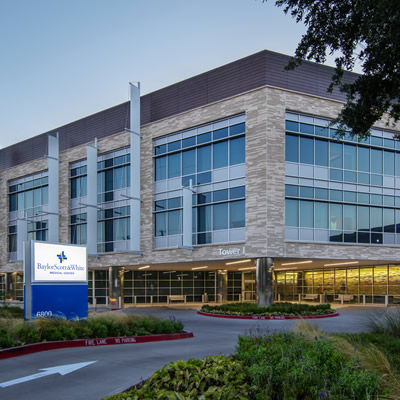
Baylor Scott & White Medical Center - Lake Pointe
6800 Scenic Dr , Rowlett, TX, 75088
Baylor Scott & White The Heart Group - Craig Ranch
6800 State Highway 121 , McKinney, TX, 75070
Baylor Scott & White The Heart Group - Prosper
111 S Preston Rd Ste 10, Prosper, TX, 75078
Baylor Scott & White Arrhythmia Management - Prosper
111 S Preston Rd Ste 10, Prosper, TX, 75078- Monday: 8:00 am - 5:00 pm
- Tuesday: 8:00 am - 5:00 pm
- Wednesday: 8:00 am - 5:00 pm
- Thursday: 8:00 am - 5:00 pm
- Friday: 8:00 am - 5:00 pm

Baylor Scott & White Legacy Heart Center - Prosper
111 S Preston Rd Ste 10, Prosper, TX, 75078- Monday: 8:00 am - 5:00 pm
- Tuesday: 8:00 am - 5:00 pm
- Wednesday: 8:00 am - 5:00 pm
- Thursday: 8:00 am - 5:00 pm
- Friday: 8:00 am - 5:00 pm

Baylor Scott & White Texas Cardiac Associates - Rowlett
7801 Lakeview Pkwy Ste 100, Rowlett, TX, 75088- Monday: 8:00 am - 5:00 pm
- Tuesday: 8:00 am - 5:00 pm
- Wednesday: 8:00 am - 5:00 pm
- Thursday: 8:00 am - 5:00 pm
- Friday: 8:00 am - 5:00 pm

Baylor Scott & White Denton Heart Group - Gainesville
201 N Interstate 35 Ste 140, Gainesville, TX, 76240- Monday: 8:00 am - 5:00 pm
- Tuesday: 8:00 am - 5:00 pm
- Wednesday: 8:00 am - 5:00 pm
- Thursday: 8:00 am - 5:00 pm
- Friday: 8:00 am - 5:00 pm

Baylor Scott & White The Heart Group - Frisco
4461 Coit Rd Ste 101, Frisco, TX, 75035- Monday: 8:30 am - 4:30 pm
- Tuesday: 8:30 am - 4:30 pm
- Wednesday: 8:30 am - 4:30 pm
- Thursday: 8:30 am - 4:30 pm
- Friday: 8:30 am - 4:30 pm

Baylor Scott & White Medical Center - Centennial
12505 Lebanon Rd , Frisco, TX, 75035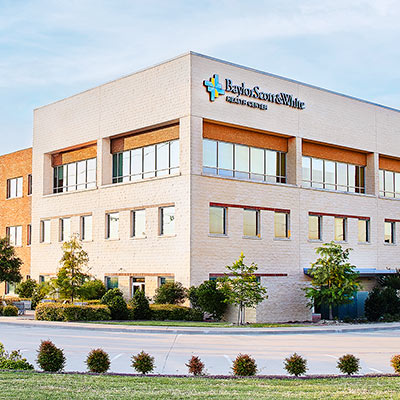
Baylor Scott & White Legacy Heart Center - Garland
7217 Telecom Pkwy Ste 205, Garland, TX, 75044- Monday: 8:00 am - 5:00 pm
- Tuesday: 8:00 am - 5:00 pm
- Wednesday: 8:00 am - 5:00 pm
- Thursday: 8:00 am - 5:00 pm
- Friday: 8:00 am - 5:00 pm
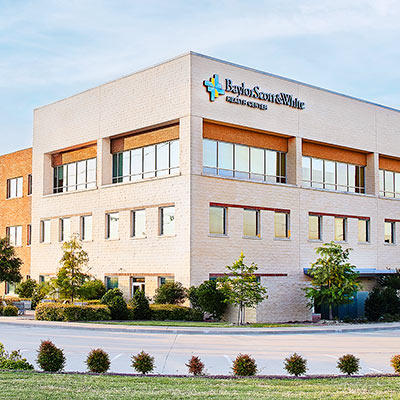
Baylor Scott & White Arrhythmia Management - Garland
7217 Telecom Pkwy Ste 205, Garland, TX, 75044- Monday: 8:00 am - 5:00 pm
- Tuesday: 8:00 am - 5:00 pm
- Wednesday: 8:00 am - 5:00 pm
- Thursday: 8:00 am - 5:00 pm
- Friday: 8:00 am - 5:00 pm

Baylor Scott & White Texas Cardiac Associates - Forney
763 E US Hwy 80 Ste 240, Forney, TX, 75126- Monday: 8:00 am - 5:00 pm
- Tuesday: 8:00 am - 5:00 pm
- Wednesday: 8:00 am - 5:00 pm
- Thursday: 8:00 am - 5:00 pm
- Friday: 8:00 am - 5:00 pm

Baylor Scott & White Legacy Heart Center - Frisco
9990 Dallas Pkwy Ste 100, Frisco, TX, 75033- Monday: 8:00 am - 5:00 pm
- Tuesday: 8:00 am - 5:00 pm
- Wednesday: 8:00 am - 5:00 pm
- Thursday: 8:00 am - 5:00 pm
- Friday: 8:00 am - 5:00 pm

Baylor Scott & White Cardiovascular Consultants at The Star
3800 Gaylord Pkwy Ste 910, Frisco, TX, 75034- Monday: 8:30 am - 5:00 pm
- Tuesday: 8:30 am - 5:00 pm
- Wednesday: 8:30 am - 5:00 pm
- Thursday: 8:30 am - 5:00 pm
- Friday: 8:30 am - 5:00 pm

Baylor Scott & White Legacy Heart Center - Plano Preston Road
6601 Preston Rd , Plano, TX, 75024- Monday: 8:00 am - 5:00 pm
- Tuesday: 8:00 am - 5:00 pm
- Wednesday: 8:00 am - 5:00 pm
- Thursday: 8:00 am - 5:00 pm
- Friday: 8:00 am - 5:00 pm

Baylor Scott & White Legacy Heart Center - Plano Spring Creek Parkway
5655 W Spring Creek Pkwy Ste 155, Plano, TX, 75024- Monday: 8:00 am - 5:00 pm
- Tuesday: 8:00 am - 5:00 pm
- Wednesday: 8:00 am - 5:00 pm
- Thursday: 8:00 am - 5:00 pm
- Friday: 8:00 am - 5:00 pm
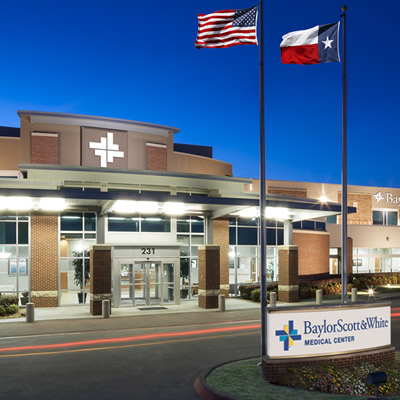
Baylor Scott & White Medical Center - Sunnyvale
231 S Collins Rd , Sunnyvale, TX, 75182
Baylor Scott & White Cardiovascular Consultants - Plano
6000 W Spring Creek Pkwy Ste 220, Plano, TX, 75024- Monday: 8:30 am - 5:00 pm
- Tuesday: 8:30 am - 5:00 pm
- Wednesday: 8:30 am - 5:00 pm
- Thursday: 8:30 am - 5:00 pm
- Friday: 8:30 am - 5:00 pm

Baylor Scott & White Arrhythmia Management - Plano
1820 Preston Park Blvd Ste 1450, Plano, TX, 75093- Monday: 8:00 am - 5:00 pm
- Tuesday: 8:00 am - 5:00 pm
- Wednesday: 8:00 am - 5:00 pm
- Thursday: 8:00 am - 5:00 pm
- Friday: 8:00 am - 5:00 pm

Baylor Scott & White Cardiology Consultants of Texas - Mesquite
1575 Interstate 30 , Mesquite, TX, 75150- Monday: 8:30 am - 5:00 pm
- Tuesday: 8:30 am - 5:00 pm
- Wednesday: 8:30 am - 5:00 pm
- Thursday: 8:30 am - 5:00 pm
- Friday: 8:30 am - 5:00 pm
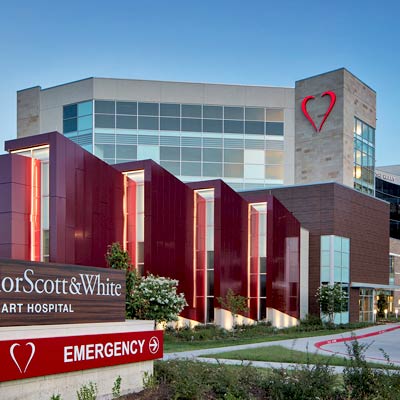
Baylor Scott & White The Heart Hospital - Plano
1100 Allied Dr , Plano, TX, 75093
Baylor Scott & White Cardiovascular Specialists - Mesquite
5308 N Galloway Ave Ste 201, Mesquite, TX, 75150- Monday: 8:00 am - 5:00 pm
- Tuesday: 8:00 am - 5:00 pm
- Wednesday: 8:00 am - 5:00 pm
- Thursday: 8:00 am - 5:00 pm
- Friday: 8:00 am - 5:00 pm

Thoracic Aortic Disease Center
4716 Alliance Blvd Pavilion II, Ste 300, Plano, TX, 75093- Monday: 8:00 am - 5:00 pm
- Tuesday: 8:00 am - 5:00 pm
- Wednesday: 8:00 am - 5:00 pm
- Thursday: 8:00 am - 5:00 pm
- Friday: 8:00 am - 5:00 pm

Genetics Center
4716 Alliance Blvd Pavilion II, Ste 350, Plano, TX, 75093
Heart Rhythm Center
4716 Alliance Blvd Pavilion II, Ste 300, Plano, TX, 75093
Baylor Scott & White The Heart Recovery Center - Plano
4716 Alliance Blvd Pavilion II, Ste 350, Plano, TX, 75093- Monday: 8:00 am - 5:00 pm
- Tuesday: 8:00 am - 5:00 pm
- Wednesday: 8:00 am - 5:00 pm
- Thursday: 8:00 am - 5:00 pm
- Friday: 8:00 am - 5:00 pm

Global Heart Health Center
4716 Alliance Blvd Pavilion II, Ste 300, Plano, TX, 75093
Baylor Scott & White The Heart Group - Plano
4716 Alliance Blvd Pavilion II, Ste 340, Plano, TX, 75093- Monday: 8:00 am - 4:30 pm
- Tuesday: 8:00 am - 4:30 pm
- Wednesday: 8:00 am - 4:30 pm
- Thursday: 8:00 am - 4:30 pm
- Friday: 8:00 am - 4:30 pm

Baylor Scott & White Cardiovascular Consultants - Plano II
4716 Alliance Blvd Ste 340, Plano, TX, 75093- Monday: 8:30 am - 4:45 pm
- Tuesday: 8:30 am - 4:45 pm
- Wednesday: 8:30 am - 4:45 pm
- Thursday: 8:30 am - 4:45 pm
- Friday: 8:30 am - 4:45 pm
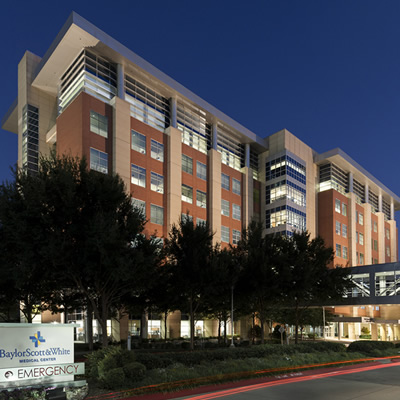
Baylor Scott & White Medical Center - Plano
4700 Alliance Blvd , Plano, TX, 75093
Baylor Scott & White Cardiology Consultants of Texas - Park Cities
9101 N Central Expy Ste 300C, Dallas, TX, 75231- Monday: 8:30 am - 5:00 pm
- Tuesday: 8:30 am - 5:00 pm
- Wednesday: 8:30 am - 5:00 pm
- Thursday: 8:30 am - 5:00 pm
- Friday: 8:30 am - 5:00 pm

Baylor Scott & White Arrhythmia Management - Denton
3333 Colorado Blvd , Denton, TX, 76210- Monday: 8:00 am - 5:00 pm
- Tuesday: 8:00 am - 5:00 pm
- Wednesday: 8:00 am - 5:00 pm
- Thursday: 8:00 am - 5:00 pm
- Friday: 8:00 am - 5:00 pm

Baylor Scott & White Denton Heart Group
3333 Colorado Blvd , Denton, TX, 76210- Monday: 8:00 am - 5:00 pm
- Tuesday: 8:00 am - 5:00 pm
- Wednesday: 8:00 am - 5:00 pm
- Thursday: 8:00 am - 5:00 pm
- Friday: 8:00 am - 5:00 pm

Baylor Scott & White Cardiovascular Consultants - Denton
3333 Colorado Blvd , Denton, TX, 76210- Monday: 8:30 am - 5:00 pm
- Tuesday: 8:30 am - 5:00 pm
- Wednesday: 8:30 am - 5:00 pm
- Thursday: 8:30 am - 5:00 pm
- Friday: 8:30 am - 5:00 pm
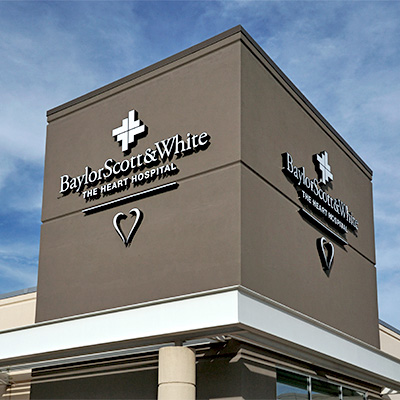
Baylor Scott & White The Heart Hospital - Denton
2801 S Mayhill Rd , Denton, TX, 76208
Baylor Scott & White The Heart Hospital Cardiovascular Clinic - Denton
3341 Unicorn Lake Blvd , Denton, TX, 76210- Monday: 8:00 am - 5:00 pm
- Tuesday: 8:00 am - 5:00 pm
- Wednesday: 8:00 am - 5:00 pm
- Thursday: 8:00 am - 5:00 pm
- Friday: 8:00 am - 5:00 pm
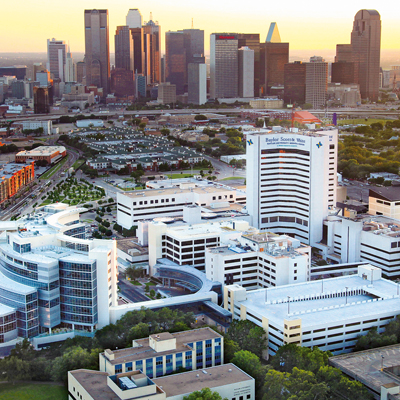
Baylor University Medical Center, part of Baylor Scott & White Health
3500 Gaston Ave , Dallas, TX, 75246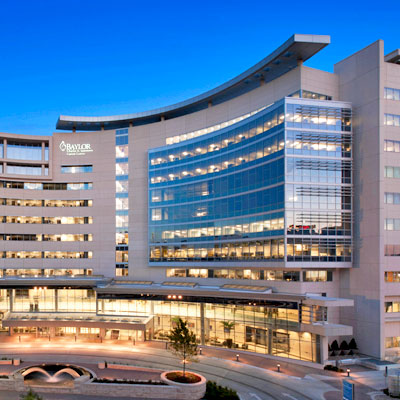
Baylor Scott & White Advanced Heart Failure Clinic - Dallas
3410 Worth St Ste 250, Dallas, TX, 75246- Monday: 8:00 am - 4:30 pm
- Tuesday: 8:00 am - 4:30 pm
- Wednesday: 8:00 am - 4:30 pm
- Thursday: 8:00 am - 4:30 pm
- Friday: 8:00 am - 4:30 pm

Baylor Scott & White Cardiac Surgery - Dallas
621 N Hall St Ste 120, Dallas, TX, 75226- Monday: 8:30 am - 4:30 pm
- Tuesday: 8:30 am - 4:30 pm
- Wednesday: 8:30 am - 4:30 pm
- Thursday: 8:30 am - 4:30 pm
- Friday: 8:30 am - 4:30 pm
Hours of Operation
Hours of Operation
Office Hours
Frequently asked questions
-
Does my risk of arrhythmia change throughout life?
Certain arrhythmias affect different age groups. If you have symptoms, talk to your healthcare provider about the best test to determine if your palpitations are serious.
-
Are there non-medication treatments for arrhythmias?
Improving your diet, getting enough good-quality sleep, exercising and deep breathing can improve arrhythmia symptoms.
-
Are all arrhythmias fatal?
No. Depending on your diagnosis, your physician can provide treatments to improve your symptoms, quality of life and the severity of your arrhythmia.